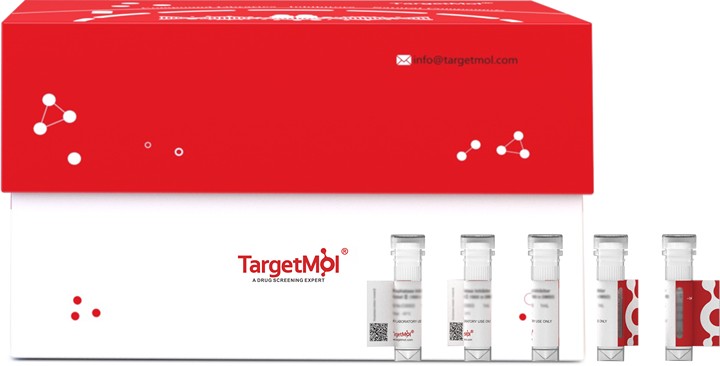
FLRT3 Protein, Human, Recombinant (His)
TMPY-01438
Overview
- SupplierTargetMol Chemicals
- Product NameFLRT3 Protein, Human, Recombinant (His)
- Delivery Days Customer16
- CertificationResearch Use Only
- Molecular Weight58 kDa (predicted)
- Scientific DescriptionLeucine-rich repeat transmembrane protein FLRT3, also known as Fibronectin-like domain-containing leucine-rich transmembrane protein 3, and FLRT3, is a single-pass type I membrane protein which belongs to the fibronectin leucine rich transmembrane protein (FLRT) family. FLRT3 contains one fibronectin type-III domain and ten LRR (leucine-rich) repeats and is expressed in kidney, brain, pancreas, skeletal muscle, lung, liver, placenta, and heart. It has a provocative expression pattern during somite development being expressed in regions of the somite where muscle precursor cells migrate from the dermomyotome and move into the myotome, and later in myotomal precursors destined to migrate towards their final destination. FLRT1, FLRT2 and FLRT3 are members of the FLRT family. The FLRT family of leucine-rich repeat (LRR) proteins is implicated in fibroblast growth factor (FGF) signalling, early embryonic development and neurite outgrowth. FLRT3 shares 55% amino acid sequence identity with FLRT1 and 44% identity with FLRT2. Two alternatively spliced transcript variants encoding the same protein have been described. The expression of FLRT3 is controlled by fibroblast growth factors (FGFs). FLRT3 has been implicated in neurite outgrowth after nerve damage, as a positive regulator of FGF signalling and in homotypic cell adhesion. FLRT3 may have a crucial role in regulating cellular adhesion between the epithelial apical ridge and the underlying mesenchyme and in establishing the dorso-ventral position of the ridge.
- Storage Instruction-20°C
- UNSPSC12352200
